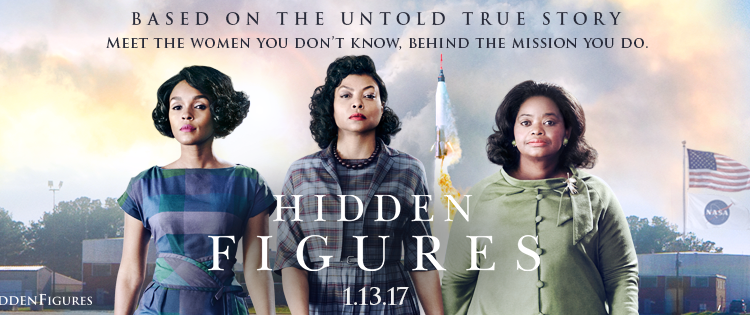Hidden Figures: Reviews & Run Downs
March 9, 2017
“Hidden Figures” is the outstanding untold story of Katherine G. Johnson (Taraji P. Henson), Dorothy Vaughan (Octavia Spencer) and Mary Jackson (Janelle Monáe) the intellectual African-American women working at NASA, who acted as the brains behind one of the most significant operations in history: the launch of astronaut John Glenn into orbit. An extraordinary accomplishment that refurbished the nation’s confidence, turned around the Space Race, and awakened the world. The visionary trio crossed all gender and race lines to influence generations to dream big.
This tale is motivational and paves a path for black female mathematicians and engineers. The story is heartbreaking as we see that segregation was just as common among intelligent white engineers as anywhere else. It takes place at Langley Research Center in Hampton, Virginia. The work comes to a peak in the launch of John Glenn into orbit on Feb. 20, 1962. We learn that black female mathematicians and engineers were big parts in preparing for the launch. The movie follows mathematician Katherine Goble, engineer Mary Jackson, and supervisor Dorothy Vaughan. While always assigned to work with other black women they slowly rose to the top and obtained opportunities to work with white males on history changing projects. Their work helped tackle segregation at Langley and helped John Glenn orbit the Earth and get back up safely.
As a black woman in today’s society I can only be thankful for the demolition of segregation. The fear that I would not make it far in life solely based on the color of my skin has been put to rest. Seeing these strong, black women embark through obstacles we can not even imagine today, has strengthened my confidence and hopefully black women throughout America. There are numerous events of segregation that we are reminded of. This film reminds us of the struggles that generation has gone through in a powerful and motivational story line. It is also a reminder to those who may have forgotten how separated they were from society. For example, the African-Americans had to use the toilets assigned to them, sit in their section at the courtroom and did not participate in the important meetings with the white men. This film moved me to the highest point. It is not a melancholy film, on the contrary, it is a film full of hope. But twice I had tears in my eyes when I saw what black women were dealing with at the time. This film overall made me feel truly grateful for the path that these women have paved for not only the black community but all communities who have gone through struggles.


